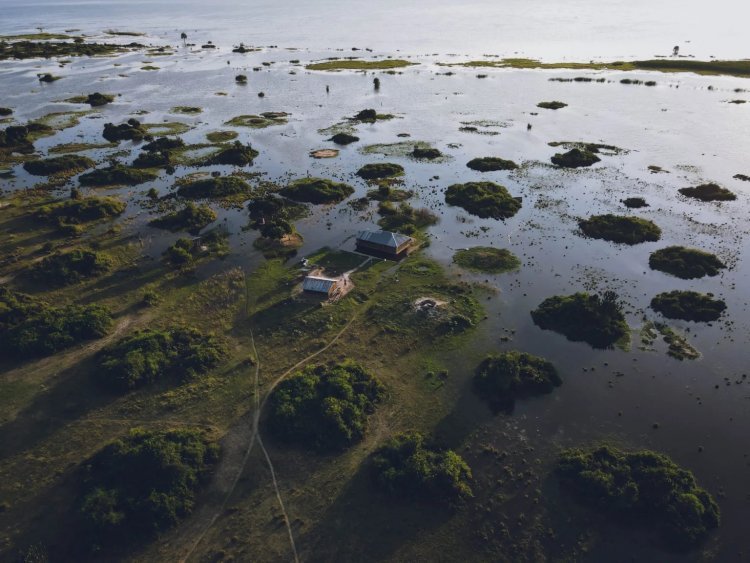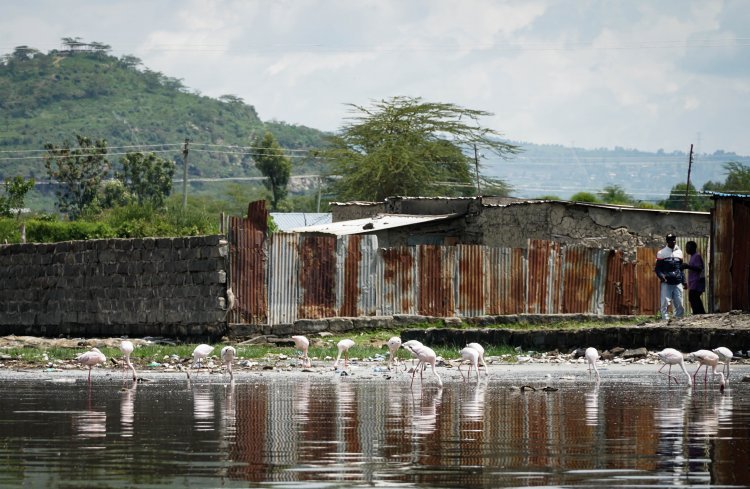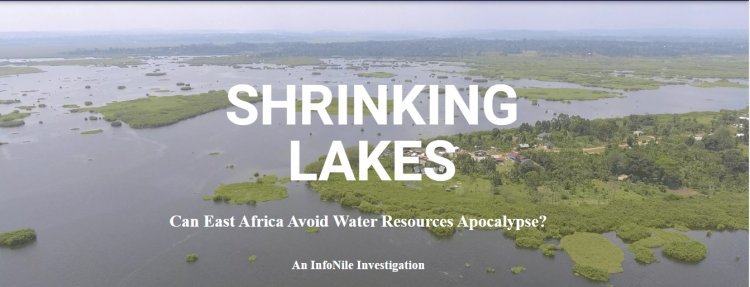East Africa is endowed with abundant lake resources and has long been the source of livelihood for millions of people who depend on water and fish across the region. It has also been crucial for proper nutrition, food security, and a source of employment and income. Nonetheless, across Uganda, Kenya, Tanzania and Rwanda, many lakes are slowly shrinking and dying; receding sharply during the dry season and flooding during the rainy season.
The fishery sector’s contribution to GDP for different East Africa Countries is enormous. For example, data from the Fisheries Division of the Food and Agriculture Organization of the United Nations (FAO) indicate that 2018 exports of fish and fish products for Tanzania were worth USD 206.9 million; USD 29.4 million for Kenya; USD 1.4 million for Rwanda; USD 171.7 million for Uganda; and USD 11,000 for Burundi.

The flooded shores of Lake Albert caused by East Africa’s abnormally high rainfall in 2020.
However, the ongoing decline in the lakes’ biodiversity threatens livelihoods and many are worried. Freshwater lakes, the most significant source of fish in East Africa, are being threatened by rapid population growth, poor fishing practices, local politics, pollution, deforestation, soil erosion and climate change.

Flamingos at the shores of Lake Nakuru have become sparse. Photo by Megan S. Lee
Under chapter 19, Article 111 of the East African Community Treaty, Partner States agree to take concerted measures to foster cooperation in the joint and efficient management and the sustainable utilisation of natural resources like water bodies within the region for the mutual benefit of the Partner States. But this is yet to be fully actualised.
Through a cross-border investigative project by InfoNile produced over two years, nine journalists from Kenya Uganda, Rwanda and Tanzania tell the status of some East African lakes and their biodiversity through in-depth storytelling, interactive maps, data visualisations, drone imagery, and video documentaries. Here you will find stories of the spirits-guarded Lake Wamala; the drying up Lake Manyara; the impacts of oil on Lake Albert in Uganda; the tale of managing an endangered species found within an interterritorial lake in Kenya and Tanzania; the status of the famous flamingo population within Kenya’s Lake Nakuru - a UNESCO World Heritage Site, and the story of Rwanda’s 101 lakes, and why they aren’t suited to fish production.
While most of these lakes are on a downward slope, some stories bring hope. Refugees in Uganda’s Lake Nakivale have taken the lead role to conserve and protect the resource, restoring up to 7 kilometers so far.

A woman collects water for domestic use at one of the fishing grounds along Lake Nakivale
But how and when did this happen? How bad is the situation now? What can be done to salvage these lakes?
Read the investigation here.
This project was produced in partnership with Code for Africa with funding from the JRS Biodiversity Foundation.




































